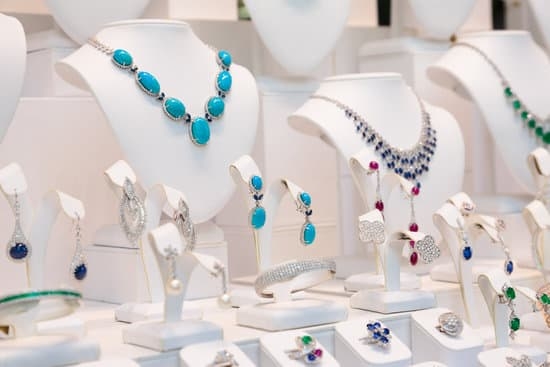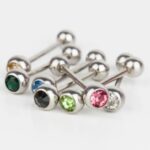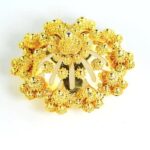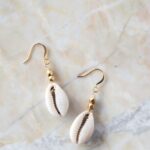Selecting the perfect wedding and engagement diamond jewelry is a significant decision that holds immense importance in one’s life. These milestones symbolize love, commitment, and promises for a lifetime, making it crucial to choose the right diamond jewelry that encapsulates these emotions.
The emotional and symbolic value attached to wedding and engagement diamond jewelry cannot be underestimated, as they serve as lifelong reminders of cherished moments. In this article, we will explore the various factors to consider when selecting wedding and engagement diamond jewelry, ensuring that you make an informed decision that best represents your unique journey of love.
One of the key aspects to understand when choosing diamond jewelry is the concept of the 4Cs: Cut, Clarity, Color, and Carat Weight. Each C plays a crucial role in determining a diamond’s beauty and value. It is important to have a comprehensive understanding of these factors to make an educated choice based on personal preferences and budget.
Additionally, establishing a budget for purchasing wedding and engagement diamond jewelry is vital. Balancing quality with affordability can be achieved through smart strategies that maximize value within different budget ranges.
The shape of the diamond also holds significance as it reflects personal style and preferences. Whether it’s a classic round shape or an elegant princess cut, each diamond shape possesses unique characteristics and symbolism. Furthermore, selecting the right metal for the band is essential in complementing the chosen diamond. Factors such as durability, color options, and maintenance requirements should be considered when making this decision.
By considering all these factors including diamond settings, certifications authenticity verification methods along with trusted sources for purchasing diamond jewelry, you can ensure that your journey towards finding the perfect wedding and engagement diamond jewelry becomes not only memorable but also smooth and secure experience.
Understanding the 4Cs
Explaining the 4Cs
When it comes to selecting the perfect wedding and engagement diamond jewelry, understanding the 4Cs is crucial. The 4Cs refer to Cut, Clarity, Color, and Carat Weight, which are the four main factors used to assess the quality and value of a diamond. Let’s delve into each of these factors in detail.
Firstly, Cut refers to how well a diamond has been cut and shaped. This does not refer to the shape of the diamond itself (which we will discuss later), but rather how well it has been cut for optimal light reflection and brilliance. A well-cut diamond will have excellent proportions that allow light to enter and refract within the stone, producing that beautiful sparkle we all desire.
Secondly, Clarity refers to the presence or absence of any internal or external blemishes or inclusions within a diamond. The clarity grade ranges from Flawless (no blemishes or inclusions visible under 10x magnification) to Included (inclusions visible with the naked eye). It’s worth noting that most diamonds have some level of imperfections, but they are often invisible to the naked eye.
Next up is Color. Contrary to what one might think, when it comes to diamonds, colorlessness is highly prized. Most diamonds range from colorless (graded as D) to light yellow (graded as Z). The less color a diamond has, the more valuable it typically is. However, there are certain fancy colored diamonds like pink or blue that can be extremely valuable due to their rarity and unique beauty.
Lastly, Carat Weight refers to how much a diamond weighs. One carat is equivalent to 200 milligrams. While carat weight does affect a diamond’s value, it’s important not to solely focus on this factor when making your selection. Remember that other aspects like cut quality also greatly contribute to a diamond’s overall beauty.
Tips for Prioritizing the 4Cs
Now that you understand the significance of each C, it’s time to prioritize them based on your individual preferences and budget. It is essential to strike a balance between the various factors in order to find the perfect diamond jewelry for your special occasion.
If sparkle and brilliance are most important to you, prioritize Cut above all. A well-cut diamond will have superior light performance and make even a smaller stone appear more stunning. Good choices for cut include Excellent or Very Good grades.
However, if size is what matters most, compromising slightly on Cut can allow you to allocate more of your budget towards Carat Weight. But remember, sacrificing too much on Cut may result in a diamond that lacks sparkle and brilliance.
For those seeking a balance between size and quality while being cost-conscious, finding diamonds with good Clarity (such as VS1 or VS2) and Color (around G or H) can be a wise choice. These grades often offer excellent value for money without compromising on visual appeal.
Ultimately, it’s important to determine which factors hold the most significance for you and allocate your budget accordingly. Remember that everyone’s preferences are unique, so there is no one-size-fits-all answer when it comes to prioritizing the 4Cs of diamond quality.
Determining Your Budget
When it comes to selecting wedding and engagement diamond jewelry, determining your budget is an essential step in the decision-making process. Setting a budget not only helps you narrow down your options, but it also allows you to find the perfect balance between quality and affordability.
Establishing a budget for purchasing diamond jewelry ensures that you make a financially sound decision without compromising on the quality or beauty of your chosen piece. It is crucial to consider your personal financial situation and allocate an amount that you are comfortable spending on this significant purchase.
To maximize value within different budget ranges, there are a few strategies you can employ. One strategy is to prioritize certain aspects of the 4Cs over others based on your preferences. For example, if size is important to you, you may choose to compromise slightly on clarity or color in order to achieve a larger carat weight within your budget. Another strategy is to consider alternative diamond cuts or shapes that offer similar visual effects at a lower price point.
In addition to these strategies, there are also potential financing options available for those seeking high-quality diamond jewelry. Many reputable jewelers offer financing plans with flexible terms that allow customers to pay for their purchase over time. It’s important to carefully review the terms and conditions of any financing options before making a decision.
Determining your budget sets the foundation for a smooth buying experience as it narrows down your choices and helps ensure realistic expectations. By finding the perfect balance between quality and affordability, you can celebrate your special occasion with beautiful wedding or engagement diamond jewelry that fits both your style preferences and financial means.
| Aspect | Strategy |
|---|---|
| 4Cs Prioritization | Prioritize certain aspects of the 4Cs based on personal preferences |
| Alternative Cuts/Shapes | Consider alternative diamond cuts or shapes that offer similar visual effects at a lower price point |
| Financing Options | Explore potential financing plans offered by reputable jewelers for flexible payment options |
Choosing the Diamond Shape
Choosing the right diamond shape is an essential part of selecting the perfect wedding and engagement diamond jewelry. Each diamond shape has its own unique characteristics and symbolism, allowing couples to find a shape that resonates with their personal style and preferences. In this section, we will explore the various popular diamond shapes available in the market and provide guidance on how to choose the ideal shape that truly represents your love.
Introduction to Diamond Shapes
The world of diamond shapes offers a range of options for couples to choose from. One of the most classic and popular shapes is the round brilliant cut, known for its timeless elegance and exceptional sparkle. Princess cut diamonds, on the other hand, feature a modern square or rectangular shape with sharp corners, making them a favorite choice for those seeking a contemporary look.
Emerald cut diamonds have a rectangular shape with stepped facets, offering a more vintage and sophisticated appeal. Cushion cut diamonds combine rounded corners with larger facets, creating a romantic and antique charm.
Symbolism of Diamond Shapes
Each diamond shape carries its own symbolism and meaning, allowing the couple to express their love in a way that resonates with them. Round brilliant cut diamonds symbolize eternity and everlasting love due to their never-ending circular shape. Princess cut diamonds represent strength and resilience, reflecting the boldness of love through their sharp edges.
Emerald cut diamonds are associated with sophistication and elegance, embodying gracefulness in love. Cushion cut diamonds often convey warmth and comfort, making them an excellent choice for couples seeking a cozy embrace within their relationship.
Choosing Based on Personal Style
When choosing a diamond shape for your wedding or engagement ring, it is crucial to consider your personal style and preferences. Think about whether you prefer classic elegance or modern sophistication. Consider whether you would like your ring to have a vintage charm or reflect contemporary trends.
It’s also important to think about the shape that complements your hand and finger shape. Experiment with different diamond shapes by trying on rings to see which one feels the most comfortable and reflects your unique personality.
Selecting the Perfect Metal
When it comes to selecting the perfect wedding and engagement diamond jewelry, choosing the right metal for the band is crucial. The metal not only serves as a backdrop for the diamond but also enhances its beauty and complements your personal style. There are several metal options available, each with its own unique characteristics and considerations.
- Platinum: Platinum is a popular choice for engagement and wedding bands due to its exceptional durability and rarity. It has a naturally white color that beautifully enhances the brilliance of a diamond. Additionally, platinum requires minimal maintenance and is hypoallergenic, making it an ideal option for those with sensitive skin.
- Gold: Gold is another classic choice that offers versatility in terms of color options. Yellow gold provides a traditional look, while white gold gives a modern and contemporary feel. Rose gold adds a romantic touch with its warm hues. It’s important to note that gold is mixed with other metals to make it durable, so consider the karat purity when choosing your gold band.
- Other Metals: In addition to platinum and gold, there are alternative metals worth considering for your wedding or engagement band. Palladium has gained popularity as an affordable alternative to platinum, offering similar characteristics in terms of durability and hypoallergenic properties. Titanium and tungsten are extremely strong metals known for their resistance to scratches, making them suitable for those with active lifestyles.
When selecting the perfect metal for your diamond jewelry, take into account factors such as durability, color preference, maintenance requirements, budget constraints, and personal style. Consider trying on different styles in various metals to see how they complement your skin tone and enhance the brilliance of your diamond.
Remember that reputable jewelers or online platforms specializing in wedding and engagement diamond jewelry are reliable sources for purchasing high-quality pieces with warranties and return policies in place. Take advantage of their expertise to ensure a smooth and secure buying experience when selecting your diamond jewelry’s perfect metal band.
Considering Diamond Settings
When selecting wedding and engagement diamond jewelry, it is essential to consider the diamond setting. The right setting not only enhances the beauty of the stone but also ensures its security and durability. There are various diamond settings to choose from, each with its own unique characteristics. Here are some popular settings to consider:
- Prong Setting: This classic setting uses metal claws or prongs to hold the diamond in place. It allows maximum light to enter the stone, enhancing its brilliance and sparkle. Prong settings can be delicate, making them ideal for smaller stones or those who prefer a minimalistic look.
- Pave Setting: In a pave setting, small diamonds are set close together, creating a “paved” surface of sparkling stones. This setting adds extra brilliance and creates an illusion of a larger center stone. Pave settings are often used on engagement bands or as accents around a solitaire diamond.
- Bezel Setting: A bezel setting encircles the entire circumference of the diamond with metal, holding it securely in place. This type of setting offers excellent protection for the stone against chips and scratches while providing a sleek and modern look.
- Halo Setting: A halo setting features a circle of smaller diamonds surrounding a center diamond, creating a “halo” effect. This setting enhances both the size and brilliance of the center stone while adding extra sparkle and glamour.
When selecting a diamond setting, it is important to consider personal style preferences, lifestyle factors, and practicality. For example, if you lead an active lifestyle or work with your hands frequently, you may want to opt for a more secure and protective setting like bezel or channel settings.
Additionally, consulting with a reputable jeweler or designer can provide valuable insights into which settings will best suit your chosen diamond and desired aesthetic. They can help guide you towards finding t.
Understanding Diamond Certifications
Diamond certifications play a crucial role in the process of purchasing wedding and engagement diamond jewelry. These certificates are issued by reputable gemological laboratories, such as GIA (Gemological Institute of America) or AGS (American Gem Society), and provide a reliable evaluation of a diamond’s authenticity and quality. Understanding these certifications is essential to make an informed decision and ensure that you are getting a genuine, high-quality diamond.
When it comes to diamond certifications, it is important to prioritize those issued by well-known and respected laboratories like GIA or AGS. These organizations have established rigorous grading standards that are widely recognized and trusted in the industry. The certified information provided by these laboratories includes details about the 4Cs-the cut, clarity, color, and carat weight-as well as other characteristics of the diamond.
Interpreting the information on a diamond certification can be overwhelming for those unfamiliar with the terminology used. However, there are some key aspects to look out for. The cut grade indicates how well the diamond has been proportioned and faceted, contributing to its brilliance and sparkle.
Clarity refers to the absence of internal or external flaws known as inclusions and blemishes. Color refers to how white or how tinted the diamond appears, with D being completely colorless and Z being light yellow or brown. Carat weight simply measures the size or mass of the diamond.
To verify the authenticity and quality of a certified diamond jewelry piece, it is advisable to compare the information on the certificate with what you see in person. Look for consistency between the certificate’s details-such as measurements, weight, color-and your visual assessment of the stone. A reputable jeweler should be able to answer any questions you may have about a certificate’s authenticity or provide additional assurance around their sourcing practices.
| Gemological Laboratory | Significance |
|---|---|
| GIA (Gemological Institute of America) | Widely recognized and respected organization with rigorous grading standards |
| AGS (American Gem Society) | Reputable laboratory known for its strict grading criteria |
Trusted Sources for Purchasing Diamond Jewelry
When it comes to purchasing diamond jewelry for your wedding or engagement, it is crucial to find trusted sources that provide a smooth and secure buying experience. The reputation and reliability of the retailer or online platform you choose can greatly impact the quality and authenticity of your diamond jewelry. By following some key guidelines, you can ensure that you make a purchase from a trustworthy source.
One of the best ways to find trusted sources is to do thorough research. Look for reputable jewelry retailers that have been in the industry for a significant amount of time and have built a positive reputation. Read customer reviews and testimonials to gauge their credibility and customer satisfaction levels. Additionally, seek recommendations from friends, family, or other couples who have recently made similar purchases.
It is also important to consider the benefits offered by trusted sources. Reputable retailers often provide quality assurance, warranties, and return policies that protect you as a consumer. These benefits give you peace of mind knowing that if there are any issues with your diamond jewelry, you will receive proper support and assistance.
In conclusion, when selecting wedding and engagement diamond jewelry, choosing trusted sources for your purchase is paramount. Through diligent research, reading reviews, seeking recommendations, and considering the benefits offered by reputable retailers, you can ensure a smooth and secure buying experience. Remember that this is an investment in one of the most special moments of your life, so take the time to select a source that will provide you with high-quality diamonds and outstanding customer service.
Frequently Asked Questions
How do I choose my wedding ring and engagement ring?
When choosing your wedding ring and engagement ring, there are a few key factors to consider. First and foremost, consider your personal style and preference. Look for rings that align with your taste and reflect your personality. Additionally, think about the durability of the ring.
Wedding rings are meant to be worn every day, so it’s essential to choose materials that can withstand everyday wear and tear. Consider factors such as the type of metal (such as gold or platinum) and the design of the band. Ultimately, choose a ring that you feel connected to and that symbolizes your love and commitment.
How do I choose a wedding diamond?
Choosing a wedding diamond involves several considerations. Start by determining your budget as diamonds can vary significantly in price based on their cut, color, clarity, and carat weight. Next, consider what matters most to you – whether it’s size, brilliance, or other characteristics of the diamond.
Cut is particularly important as it impacts how well the diamond reflects light. The most popular choices for wedding diamonds include round brilliant cuts, princess cuts, cushion cuts, or emerald cuts – each offering unique qualities in terms of sparkle and brilliance. Lastly, ensure you’re purchasing from a reputable jeweler who can provide certification for the diamond’s quality.
What is the best cut of diamond for a wedding ring?
The best cut of diamond for a wedding ring is subjective and depends on personal preference. However, there are popular cuts that are often preferred due to their timeless appeal and ability to maximize brilliance. The round brilliant cut is widely regarded as one of the best cuts for engagement rings due to its exceptional sparkle created by precisely angled facets designed to capture light effectively.
Princess cut diamonds are also highly sought after; they possess a modern yet elegant appearance with their square shape and dazzling facets providing similar sparkle to round brilliants but with a more geometric aesthetic charm. Ultimately, selecting the best cut depends on your personal style preferences and desired level of brilliance sparkled by the diamond.

Welcome to my jewelry blog! My name is Sarah and I am the owner of this blog.
I love making jewelry and sharing my creations with others.
So whether you’re someone who loves wearing jewelry yourself or simply enjoys learning about it, be sure to check out my blog for insightful posts on everything related to this exciting topic!





